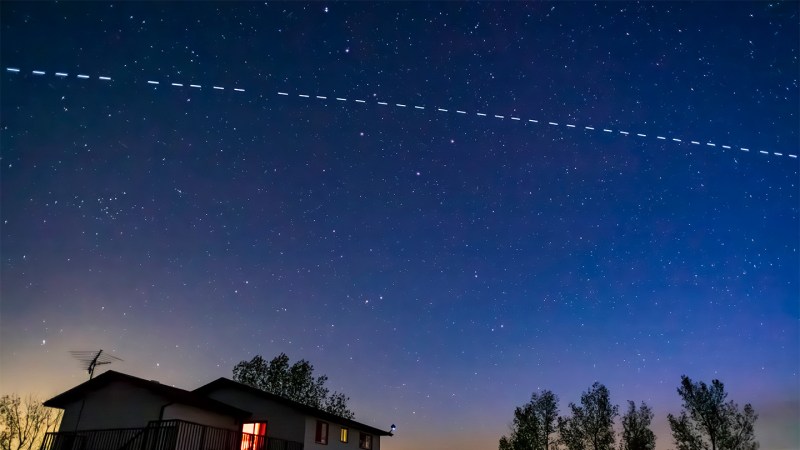
While SpaceX’s Starlink satellites are enabling Internet access and mobile communications around the globe, they are also posing a threat to radio astronomy, a new study suggests.
In several wavelength bands, the inadvertent leakage of electromagnetic radiation from the latest generation of satellites is more than 30 times brighter than emissions from earlier versions, Cees Bassa, a radio astronomer at the Netherlands Institute for Radio Astronomy in Dwingeloo and his colleagues report on September 18. IN Astronomy & Astrophysics. Because the latest generation of Starlink satellites will orbit up to 100 kilometers lower than previous satellites, they will appear even brighter to ground-based telescopes. In general, their brightness could easily mask observations of fainter objects such as galaxies or distant stars.
Radio telescopes, instead of collecting visible light, collect lower-energy waves from sources that emit radiation at longer wavelengths. Bassa and his team used six radio telescopes at an observatory near Exloo, the Netherlands, to characterize the emissions from the Starlink satellites during two one-hour sessions in July. Although the satellites passed through the telescopes’ field of view for only 12 and 40 seconds, they were very bright: Compared to the faintest astronomical sources that can be observed by those telescopes, the Starlink satellites are about 10 million times brighter, Bassa and he noted the team.
And the problem is likely to get worse: SpaceX is launching about 40 second-generation Starlink satellites every week, researchers note, with more than 6,000 already out there (SN: 3/3/23). Bassa and his colleagues have discovered that other companies’ satellites are also detectable by radio telescopes, and they are also working to measure those emissions.
Bassa and his colleagues hope their continued observations will prompt the developers of such satellites to redesign their equipment where possible to reduce unwanted radio emissions.
#Radio #waves #emanating #Starlink #satellites #darken #cosmos
Image Source : www.sciencenews.org